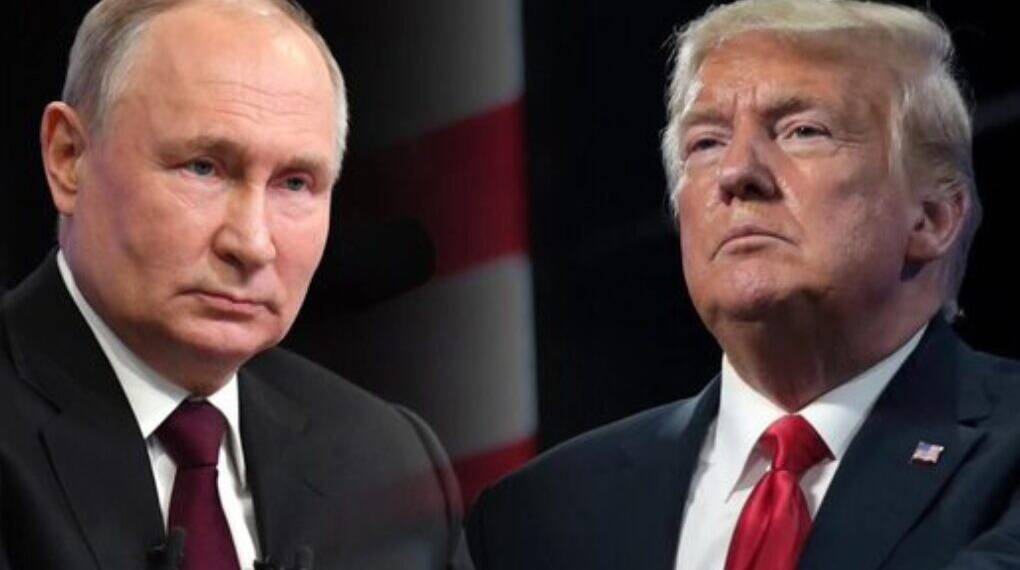The U.S. debate over supplying Ukraine with Tomahawk cruise missiles has triggered a fresh wave of geopolitical tensions. While Kyiv pressed for the long-range weapon that could strike deep inside Russian territory, the Trump administration has quietly pulled back from the idea, citing logistical, political, and security concerns.
The move comes as Vladimir Putin dismissed the significance of such missiles, Dmitry Medvedev issued stark nuclear warnings, and U.S. Congresswoman Anna Paulina Luna unexpectedly called for restoring relations with Moscow.
Ukraine’s Bid for Tomahawks
For months, Ukrainian President Volodymyr Zelenskyy has lobbied Washington for Tomahawk Land Attack Missiles (TLAMs). Known for their long range—over 1,000 miles—and precision guidance, Tomahawks could enable Ukraine to strike Russian airfields, command centers, supply hubs in Crimea, and potentially even Moscow.
Zelenskyy personally pitched the request to President Donald Trump during September’s United Nations General Assembly. U.S. Vice President JD Vance later confirmed the appeal was under review, raising speculation that Kyiv was on the verge of receiving one of America’s most potent strike capabilities.
But by early October, hopes were fading. Pentagon officials suggested it was “unlikely” Ukraine would receive Tomahawks anytime soon.
Why Washington Stepped Back?
Three major factors explain the hesitation.
First, logistics. Ukraine lacks compatible launch platforms for Tomahawks. Integrating them with Soviet-era aircraft like the Su-24 would require extensive modifications, while constructing new ground-based launch systems could take months.
Second, stockpiles. After years of U.S. military operations in the Middle East and recent deployments against Houthi forces in Yemen, Tomahawk inventories are stretched thin. The Pentagon is reluctant to reduce its own reserves at a time when American forces are preparing for multiple global contingencies.
Third, politics. Authorizing Tomahawk deliveries would tie Washington directly to their use. These missiles rely heavily on U.S. GPS, targeting data, and intelligence support, leaving little room for plausible deniability if they were used to hit Russian territory.
Faced with these challenges, Trump’s team opted for restraint, despite his earlier promises of “peace through strength.”
Putin’s Dismissal, with a Warning
On October 3, President Vladimir Putin addressed the issue during a Teachers’ Day event in Moscow. Downplaying the potential impact of Tomahawks, he declared, “They would not have a significant impact on the battlefield.”
Yet Putin’s statement carried a warning. He cautioned that any U.S. decision to transfer such weapons would mark “a new stage of escalation” and could irreparably damage U.S.-Russia relations.
The Russian leader also praised Trump as a “strong leader who understands realpolitik,” a remark analysts interpreted as a calculated mix of flattery and intimidation.
Medvedev’s Nuclear Threats
If Putin projected calm, former president Dmitry Medvedev struck a more aggressive tone. On September 29, he warned on Telegram that supplying Ukraine with Tomahawks would raise the question of “who truly pulls the trigger—Kyiv or Washington?”
He argued that Europe “cannot afford war with Russia” and hinted that nuclear weapons remained an option if NATO involvement crossed red lines. Medvedev later amplified his threats in a video message, describing Western powers as a “paper tiger” and promising “adequate countermeasures” to any Tomahawk deployment.
Western analysts described his statements as part of Russia’s “escalate to de-escalate” strategy, in which nuclear threats are used to deter adversaries from taking steps perceived as threatening.
Trump’s Balancing Act
President Trump entered office in January 2025 promising a blend of toughness and pragmatism in dealing with Russia. He mocked Putin as a “gambler” but insisted that Ukraine, with sufficient support, could win back its occupied territories. His meeting with Zelenskyy at the UN raised hopes of a dramatic new U.S. arms package.
However, the decision to withhold Tomahawks illustrates the administration’s cautious balancing act. Critics within his own Republican Party argue the move signals weakness. One strategist described it as “Trump chickening out.”
Yet Trump’s aides defend the decision as strategic restraint, noting that the U.S. is instead expanding intelligence-sharing with Kyiv and supplying alternative long-range strike systems such as ATACMS missiles.
A Republican Voice for Rapprochement
In a surprising twist, Representative Anna Paulina Luna (R-Florida) openly questioned the logic of further escalation. On October 3, she tweeted: “There is no reason why we can’t be great trade partners with Russia.”
Luna argued that sanctions have failed to change Moscow’s behavior and that restoring economic ties could actually benefit the U.S., particularly in energy and uranium imports. Her comments drew backlash from Ukraine supporters but reflected a growing sentiment among Republican voters. Recent polls suggest nearly 40 percent of GOP voters now favor neutrality in the conflict.
For the Kremlin, such voices represent a political opening in Washington.
Strategic Implications
For Ukraine, the absence of Tomahawks is a disappointment, limiting Kyiv’s options for long-range strikes. Ukrainian forces may now pressure Germany to release Taurus missiles or France to expand deliveries of SCALP cruise missiles.
For Russia, the decision is a propaganda victory. Putin can claim that American hesitation proves the limits of Western resolve. Medvedev’s nuclear rhetoric, meanwhile, reinforces Moscow’s strategy of intimidation.
For the United States, the episode underscores the challenge of balancing support for Ukraine with the risk of direct confrontation with Russia. By refusing Tomahawks, Trump avoided a potential flashpoint—but also left critics questioning whether Washington is sending mixed signals.
The Tomahawk debate highlights how even a single weapons system can shape global perceptions of strength, weakness, and the risk of escalation.
Putin dismisses the missiles as irrelevant but warns of consequences. Medvedev raises the specter of nuclear war. Trump opts for caution, drawing both criticism and praise. And voices like Rep. Luna’s hint at a shifting political landscape inside the United States.
For Ukraine’s soldiers on the front lines, the outcome is clear: one more tool denied in a war where every weapon counts.
As the conflict grinds on, the Tomahawk saga reveals just how thin the line remains between restraint and escalation—and how each decision in Washington reverberates across the battlefields of Eastern Europe.








